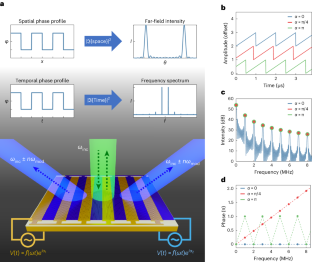2024-07-24 カリフォルニア工科大学(Caltech)
天文学者たちは、二つの大規模な銀河団の衝突で、暗黒物質が通常の物質から分離する現象を観測しました。これらの銀河団には数千の銀河が含まれており、地球から数十億光年離れています。衝突時、暗黒物質は重力を感じながらも光を放たず、通常の物質を先行しました。この観測は、暗黒物質と通常物質の速度の分離を直接確認した初めての例です。
◆MACS J0018.5+1626と呼ばれるこの銀河団衝突では、通常物質が衝突で遅れたのに対し、暗黒物質はそのまま通過しました。研究にはカリフォルニア工科大学、NASAのチャンドラX線観測所、ハッブル宇宙望遠鏡などが参加しました。この研究は、暗黒物質の性質に関する新たな手がかりを提供し、今後の研究の出発点となるでしょう。
<関連情報>
- https://www.caltech.edu/about/news/dark-matter-flies-ahead-of-normal-matter-in-mega-galaxy-cluster-collision
- https://iopscience.iop.org/article/10.3847/1538-4357/ad3fb5
ICM-SHOX. I. 方法論の概要とMACS J0018.5+1626合体におけるガスと暗黒物質の速度分離の発見 ICM-SHOX. I. Methodology Overview and Discovery of a Gas–Dark Matter Velocity Decoupling in the MACS J0018.5+1626 Merger
Emily M. Silich, Elena Bellomi, Jack Sayers, John ZuHone, Urmila Chadayammuri, Sunil Golwala, David Hughes, Alfredo Montaña, Tony Mroczkowski, Daisuke Nagai
The Astrophysical Journal Published 2024 June 12
DOI:10.3847/1538-4357/ad3fb5

Abstract
Galaxy cluster mergers are rich sources of information to test cluster astrophysics and cosmology. However, cluster mergers produce complex projected signals that are difficult to interpret physically from individual observational probes. Multi-probe constraints on the gas and dark matter (DM) cluster components are necessary to infer merger parameters that are otherwise degenerate. We present Improved Constraints on Mergers with SZ, Hydrodynamical simulations, Optical, and X-ray (ICM-SHOX), a systematic framework to jointly infer multiple merger parameters quantitatively via a pipeline that directly compares a novel combination of multi-probe observables to mock observables derived from hydrodynamical simulations. We report a first application of the ICM-SHOX pipeline to MACS J0018.5+1626, wherein we systematically examine simulated snapshots characterized by a wide range of initial parameters to constrain the MACS J0018.5+1626 merger geometry. We constrain the epoch of MACS J0018.5+1626 to the range 0–60 Myr post-pericenter passage, and the viewing angle is inclined ≈27°–40° from the merger axis. We obtain constraints for the impact parameter (≲250 kpc), mass ratio (≈1.5–3.0), and initial relative velocity when the clusters are separated by 3 Mpc (≈1700–3000 km s−1). The primary and secondary clusters initially (at 3 Mpc) have gas distributions that are moderately and strongly disturbed, respectively. We discover a velocity space decoupling of the DM and gas distributions in MACS J0018.5+1626, traced by cluster-member galaxy velocities and the kinematic Sunyaev–Zel’dovich effect, respectively. Our simulations indicate this decoupling is dependent on the different collisional properties of the two distributions for particular merger epochs, geometries, and viewing angles.



